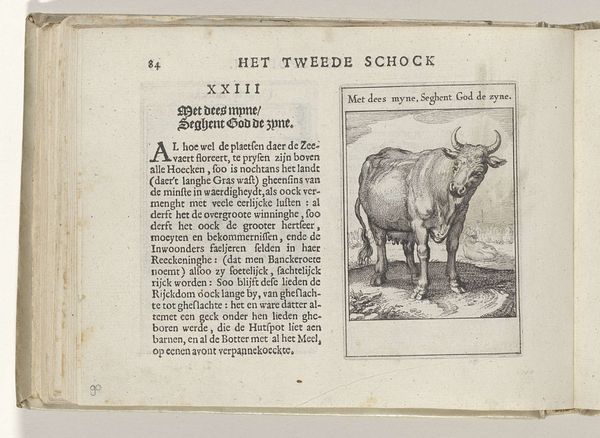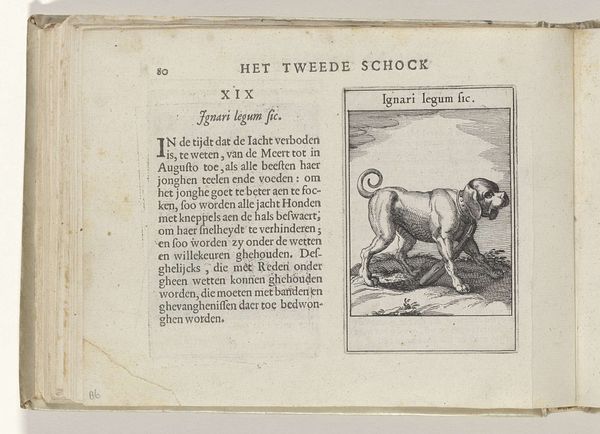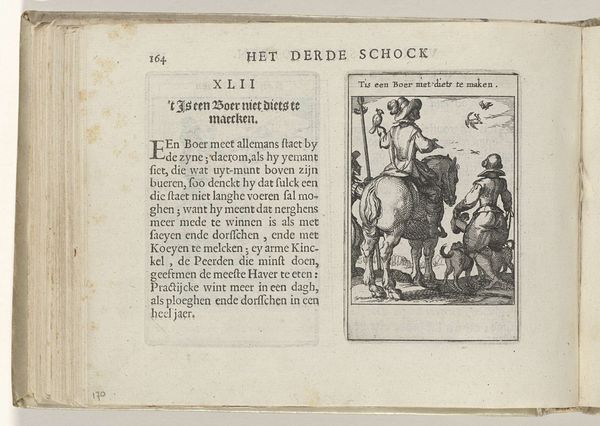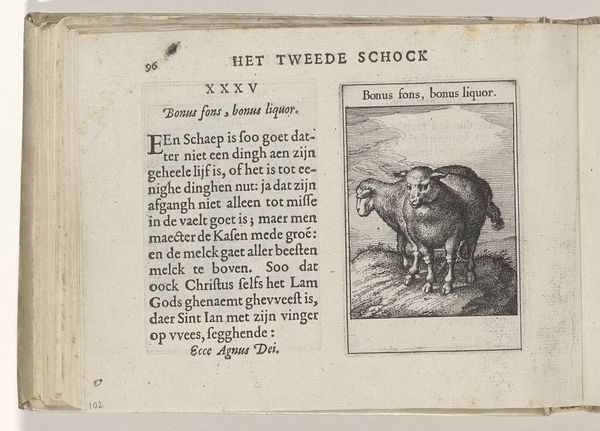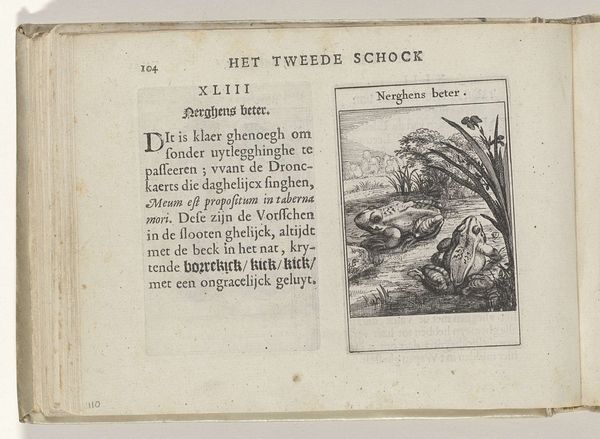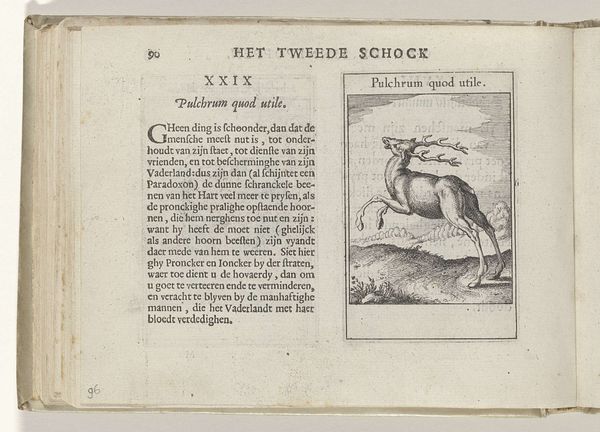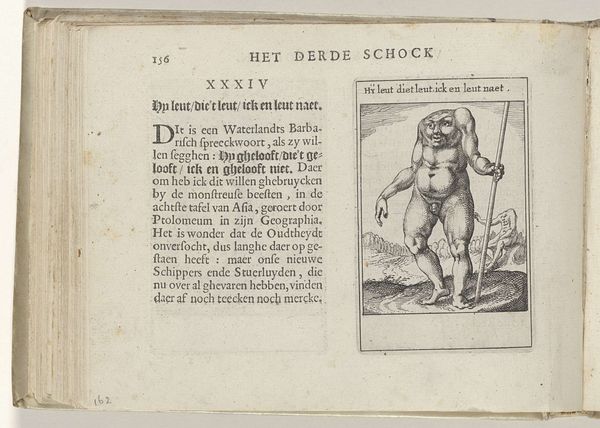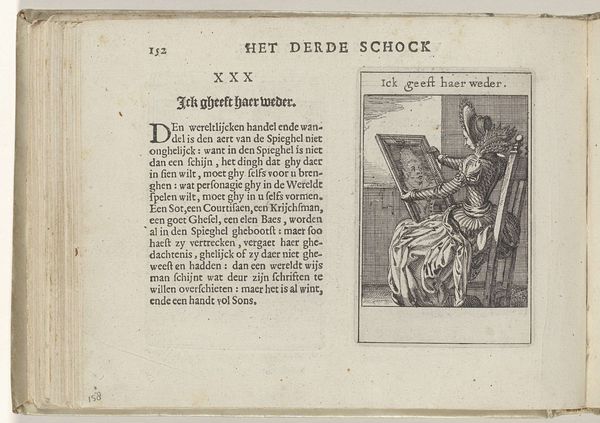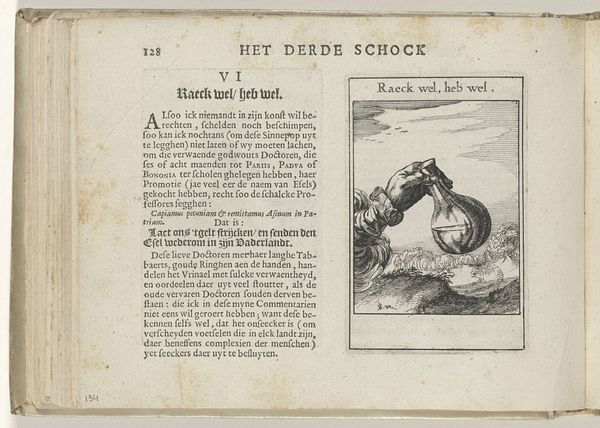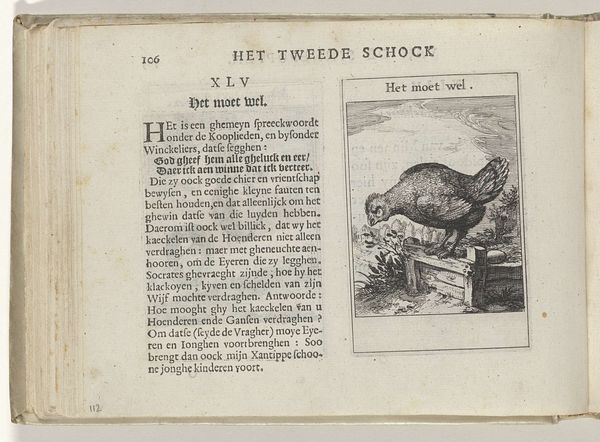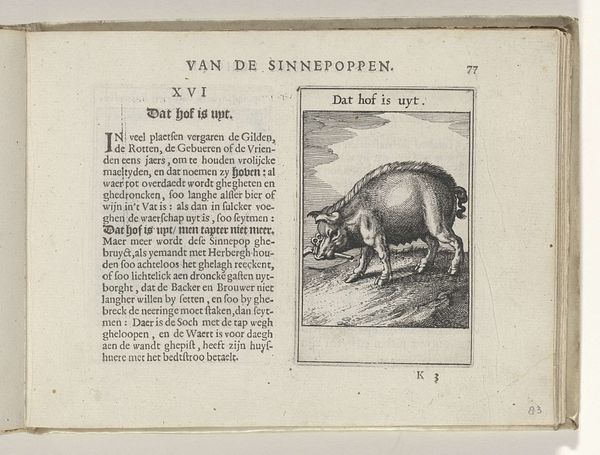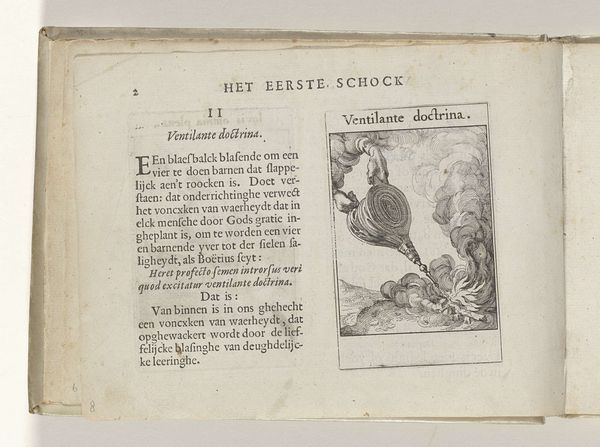
graphic-art, print, engraving
#
graphic-art
#
medieval
#
animal
# print
#
11_renaissance
#
engraving
Dimensions: height 137 mm, width 188 mm, height 95 mm, width 60 mm
Copyright: Rijks Museum: Open Domain
Curator: Look closely at this book-bound print, "XXI Noch luy, noch lecker," made in 1614 by Roemer Visscher. What springs to mind when you first see it? Editor: Well, there’s definitely a whimsical mood, and the donkey really jumps out. It's so detailed and positioned next to dense, antiquated text. How do we even begin to unpack this thing? Curator: I always start by thinking about context, you know? Visscher was part of this whole Renaissance culture of emblems and moralizing messages. The donkey wasn't just an animal; it was a symbol loaded with cultural baggage. What do you make of the donkey, what qualities do you observe in its detailed design? Editor: Hmm, he looks so patient and maybe even a little world-weary. But why "neither lazy nor a glutton?" Curator: Good eye. The inscription is intended to be paradoxical; Visscher presents this seemingly humble donkey and prompts the viewer to consider perceived limitations, reframing stubbornness into resilience, for example, and, dare I say, gluttony into something more. Don't you agree? Editor: That's a pretty cool interpretation. So it's like a gentle nudge to see value where we usually see… well, a stubborn beast of burden. It’s got me rethinking my assumptions. Curator: Exactly. Art’s power isn’t just in what’s depicted, but how it makes us question our own little worlds, inside our heads. Editor: I never would have seen that at first glance, to be honest. I am thankful for your expertise, especially today. Curator: And I must acknowledge the merit in seeing a 'stubborn beast of burden,' and celebrate how new interpretations can come from a fresh perspective. Thank you for sharing your perspective.
Comments
No comments
Be the first to comment and join the conversation on the ultimate creative platform.
